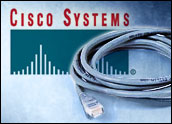
Networking giant Cisco and server-level antivirus specialist Trend Micro have announced an extension of their existing collaboration to provide worm and virus detection-and-prevention services for businesses.
A rough year of worm outbreaks and other security issues, such as a source-code leak and a significant vulnerability in Cisco’s widely used IOS routers, added pressure on the San Jose-based company to bolster network defenses.
Ken Dunham, iDefense director of malicious code intelligence, told TechNewsWorld that Trend Micro’s strength in the server market made it a likely partner for network-oriented services, which will include vulnerability assessment, outbreak prevention and cleanup.
“Trend Micro’s a good choice for that,” Dunham said. “If I’m an investor or a user with either company, I’m saying this is a step in the right direction. I’m supportive of that because security is important and it shows they’re taking it seriously.”
Detection and Prevention
Cisco and Trend Micro said the extended agreement, born out of Cisco’s Network Admission Control (NAC) collaboration with Trend Micro and other antivirus vendors — including Network Associates and Symantec — will mean integration of Cisco network infrastructure and security systems with Trend Micro’s worm and virus technology.
“As Internet threats continue to evolve in their severity and complexity, it is critical that customers deploy comprehensive outbreak prevention solutions to help build self-defending networks,” said Cisco VPN and security vice president Richard Palmer in a statement.
While the companies indicated Trend Micro’s technology now will be part of Cisco Intrusion Detection System software deployed in Cisco IOS routers, Catalyst switches and network security appliances, other capabilities — such as vulnerability assessment, outbreak prevention and damage cleanup — will be included in subsequent phases of the extended collaboration.
Always at Risk
Dunham said that although companies take proper security steps, such as adequately configuring firewall and antivirus defenses, they still can come under attack from the latest virus or worm.
“Even if they do [deploy best practices], we’ll always have new and emerging threats that will play the cat-and-mouse game and will always be one step ahead in that sense,” he said.
Aberdeen Group vice president Jim Hurley told TechNewsWorld that companies also are struggling with remote users who can easily introduce Internet viruses and worms when they connect to the network.
“There are all kinds of devices attached to the network that IT doesn’t know about,” Hurley said.
Security for Sales
Cisco and Trend said the NAC program and the latest joint efforts will bolster Cisco’s Self-Defending Network strategy, which now will incorporate Trend Micro’s Enterprise Protection Strategy (EPS) aimed at proactive management of the network-worm outbreak cycle.
Dunham said that although companies historically have been able to keep security compromises quiet, the barrage of more recent, high-profile computer worms has highlighted the need for effective defense and proactive measures. He added that Cisco’s role and security stance is particularly significant because the company’s products are so widely deployed.
“There are implications for their bottom line,” he noted. “They have an important impact on the communication we’ve all come to rely on. It has also come to dollars as people look to alternatives because they are tired of problems. Cisco could be in the same situation if they didn’t take security seriously.”





















































